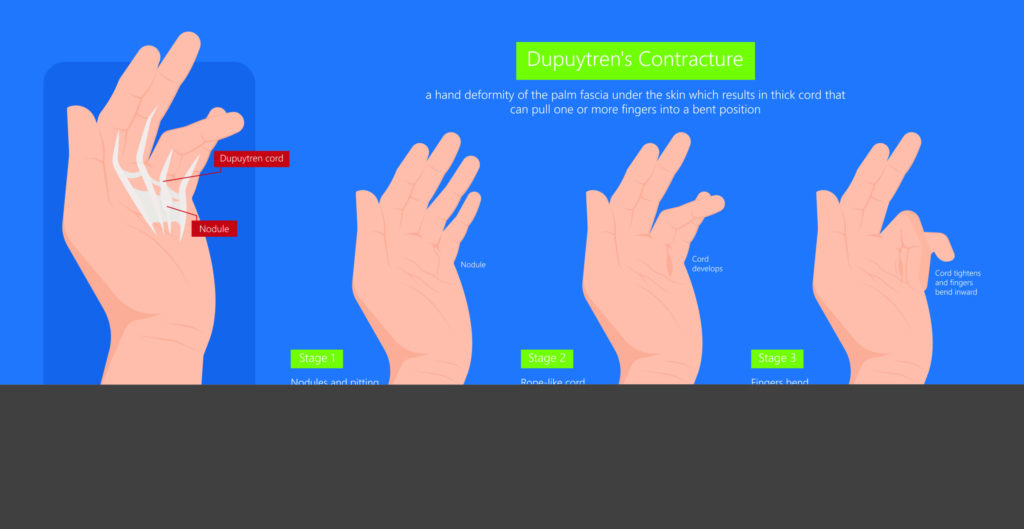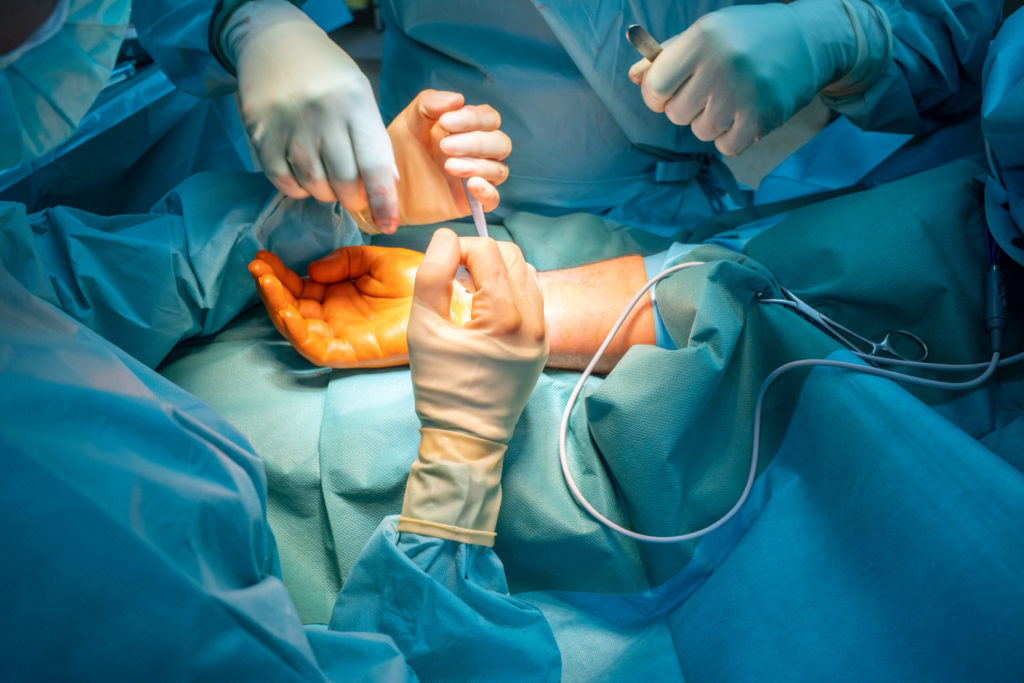Use our convenient online scheduler to book an appointment now.

What Is Dupuytren's Contracture?
At Town Center Orthopaedics, we are committed to providing a patient-centered approach to hand and wrist care to address conditions like carpal tunnel syndrome, arthritis, and Dupuytren’s contracture. Our hand and wrist specialists in VA can develop a care plan just for you, using conservative treatments or, if conservative treatment is ineffective, advanced surgical options.

Dupuytren’s contracture is a hand deformity that usually develops over several years. An abnormal thickening of the skin in the palm of your hand at the base of your finger can cause knots of tissue––like a lump in your palm––to form under the skin. This can eventually create a thick cord that can pull one or more fingers into a bent position. The condition was first noted in 1831 by Baron Guillaume Dupuytren, a French surgeon.
Dupuytren’s disease occurs in about 5 percent of people in the United States. The condition is 3 to 10 times more common in people of European descent than in those of non-European descent.
While commonly seen in patients of Northern European ancestry as noted above, this condition can be seen in people of all races. There may also be a genetic component with a strong familial tendency to develop Dupuytren’s disease, though some patients have no known affected relatives.
Doctors do not know the exact cause of this process. While the development of Dupuytren’s cords or nodules may occur following trauma, the exact relationship is uncertain.

Some other risk factors may include:
- Age. Dupuytren’s contracture occurs most commonly after the age of 50.
- Sex. Men are more likely to develop Dupuytren’s and to have more severe contractures than women.
- Ancestry. People of Northern European descent are at higher risk of the disease.
- Family history. Dupuytren’s contracture often runs in families.
- Smoking and alcohol use. Tobacco use is associated with an increased risk of Dupuytren’s. This may be due to microscopic changes within blood vessels caused by smoking. Alcohol intake is also associated with Dupuytren’s.
- Diabetes. People with diabetes are reported to have an increased risk of Dupuytren’s contracture.
In most cases, doctors can diagnose Dupuytren’s contracture simply by the look and feel of your hands. Your orthopedic doctor also might check to see if you can place your hand flat on a tabletop or other flat surface. Not being able to fully flatten your fingers indicates you may have Dupuytren’s. Other tests are rarely necessary.
In terms of treatment, there are a few avenues you can discuss with the Town Center Orthopaedic team.
- Watch and wait. If progression is slow and does not interfere with your daily activities, you may not need immediate treatment and can watch for progression by implementing the tabletop test.
- Needle aponeurotomy. Also called percutaneous needle fasciotomy, this 30-minute procedure can be done in your doctor’s office. A needle is inserted through your skin to puncture and break the cord of tissue that’s causing your fingers to bend.
The main advantages of the needling technique are that there is no incision, it can be done on several fingers at the same time, and very little physical therapy is typically needed afterward. The main disadvantage is that needle aponeurotomy can’t be used in some places in the finger because it could damage a nerve or tendon
- Enzyme injections. The FDA has approved collagenase Clostridium histolyticum (Xiaflex) for the purpose of softening and weakening the cord in your palm, allowing your orthopedic specialist to later manipulate your hand in an attempt to break the cord and straighten your fingers.
- Surgical treatment. If the more conservative treatments above are ineffective, your doctor may recommend hand surgery. This may be an option for those with advanced disease, limited function, and progressing disease.
During surgery, your hand surgeon will remove the tissue in your palm affected by the disease. The main advantage of surgery is a more complete and longer-lasting release than that provided by the needle or enzyme methods. The main disadvantages are that physical therapy is usually needed after surgery, and recovery can take longer.
Hand Surgery Specialists in VA
When you visit Town Center Orthopaedics for Dupuytren’s contracture, you can expect a personalized and comprehensive evaluation. During the evaluation, your hand and wrist doctor will be able to skillfully diagnose your condition and recommend treatment based on your unique needs to restore hand function and range of motion.
To schedule your evaluation with a hand and wrist specialist for your orthopedic needs, call Town Center Orthopaedics any time at (571) 250-5435, or request an appointment online.
Join our Mailing List
TCO provides patients with orthopedic problems the trusted resources and patient-centered advice they need to “Feel Better. Move Better. Be Better.”
© 2024 Town Center Orthopaedics | All Rights Reserved